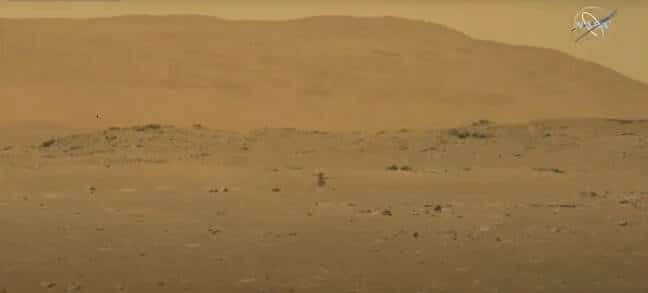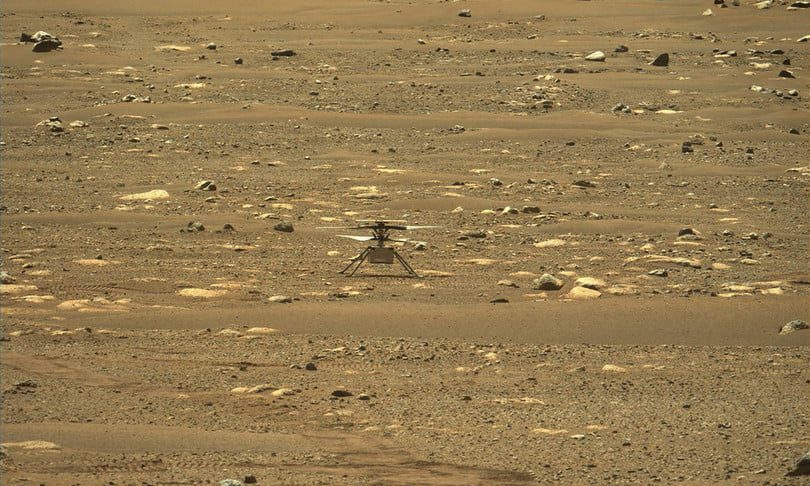On a dusty red planet nearly 290 million kilometers away, a small helicopter takes off and writes a page of history. It sounds like a fairy tale, but it's reality, NASA's Ingenuity Mars helicopter drone flies, and is the first Earth-controlled human aircraft to fly over the skies of another planet.
In a blaze of applause reminiscent of other times and other missions, engineers confirmed that the tiny helicopter spun its rotors, took off and landed according to plan. An image from the helicopter's onboard navigation camera showing its shadow on the surface of Mars was quickly followed by another sequence from the Perseverance rover showing the helicopter hovering.
Flying through human history
Like any legendary undertaking, it was not easy and it risked not happening. The flight occurred a week later than initially expected. Some command sequences were changed before the Ingenuity drone, deployed from the underside of the Perseverance rover a few weeks earlier, could spin its rotors and take Martian flight.

Being one of the newest pieces of the kit on the rover, Ingenuity was initially fixed on the belly of the vehicle. The small foldable helicopter, never tested before, flies by shaking its two rotor blades and is powered by solar panels and batteries. Its onboard hardware, however, is more like a cell phone than a helicopter; runs Linux on a Qualcomm Snapdragon 801 chip, a processor traditionally found in smartphones.
Ingenuity is the first of many
Since it is the first flying contraption to set foot on another planet, Ingenuity should be considered an experiment to test the technology. The small helicopter will only run for 30 days, which is why its chips can afford to be less robust than the rover's components. Perseverance. The goal is to successfully fly Ingenuity along a series of pre-programmed paths, with takeoff and landing at the same point, and a maximum flight time of just 90 seconds.
If this doesn't seem like much to you, know that it is difficult to fly to another planet with different atmospheric and gravitational conditions. The Martian atmosphere is about 100 times less dense than Earth's, there is less air resistance. And this inevitably makes it difficult to control Ingenuity's movements.

Now what?
NASA is planning to use Ingenuity on three-day cycles. They will be divided as follows: it will fly one day and spend the next two days sending data to the base station before it starts again.
Although Ingenuity is only being tested on short, simple routes, the space agency has high hopes for how the technology can advance and help us explore space in the future. More powerful successors to Perseverance may someday assist robotic rovers, carry light payloads, help explore new terrain, and direct vehicles to locations with particularly interesting rocks or features to analyze. They can also probe hard-to-reach areas and have a wider view of the ground than robots on the ground.


